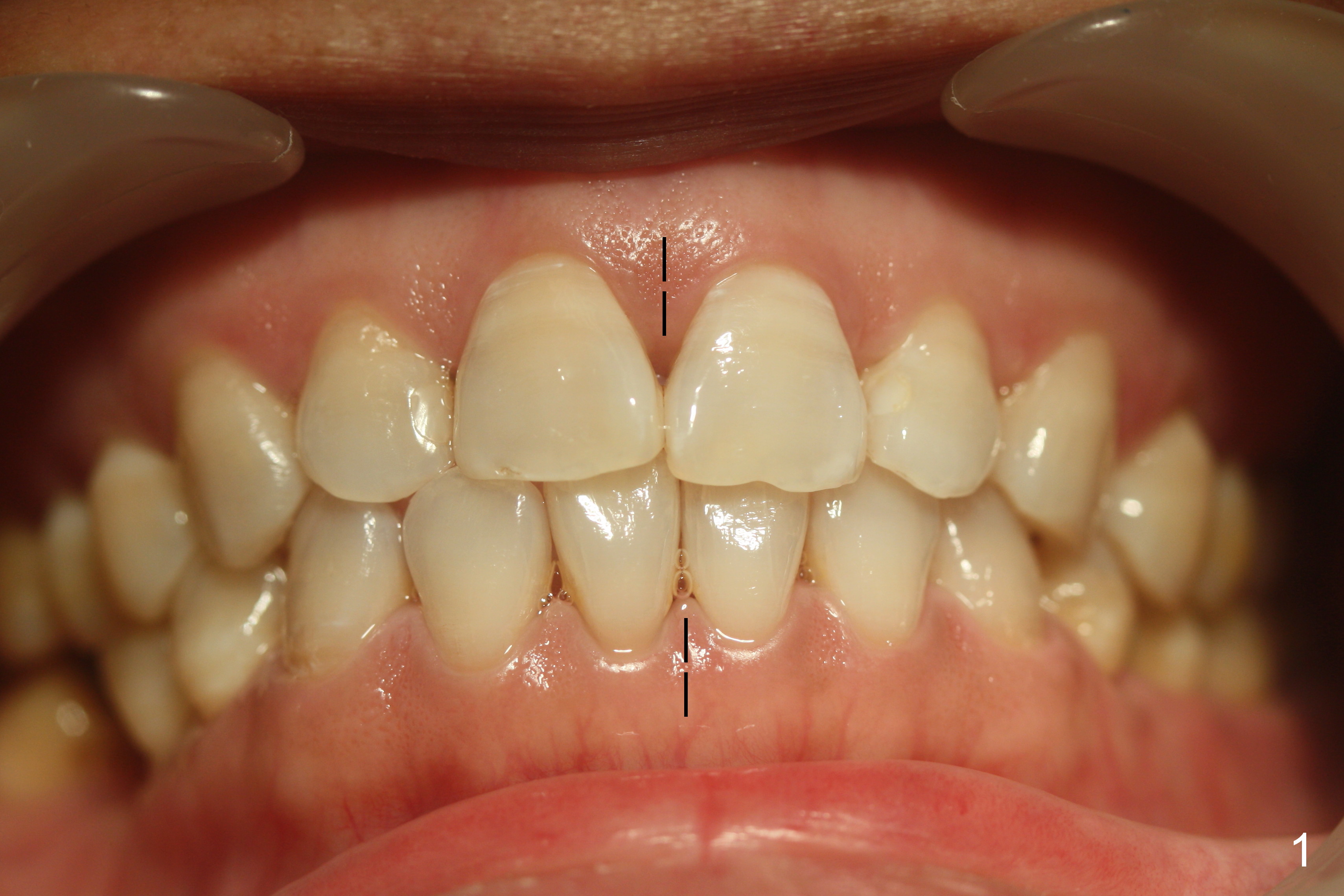
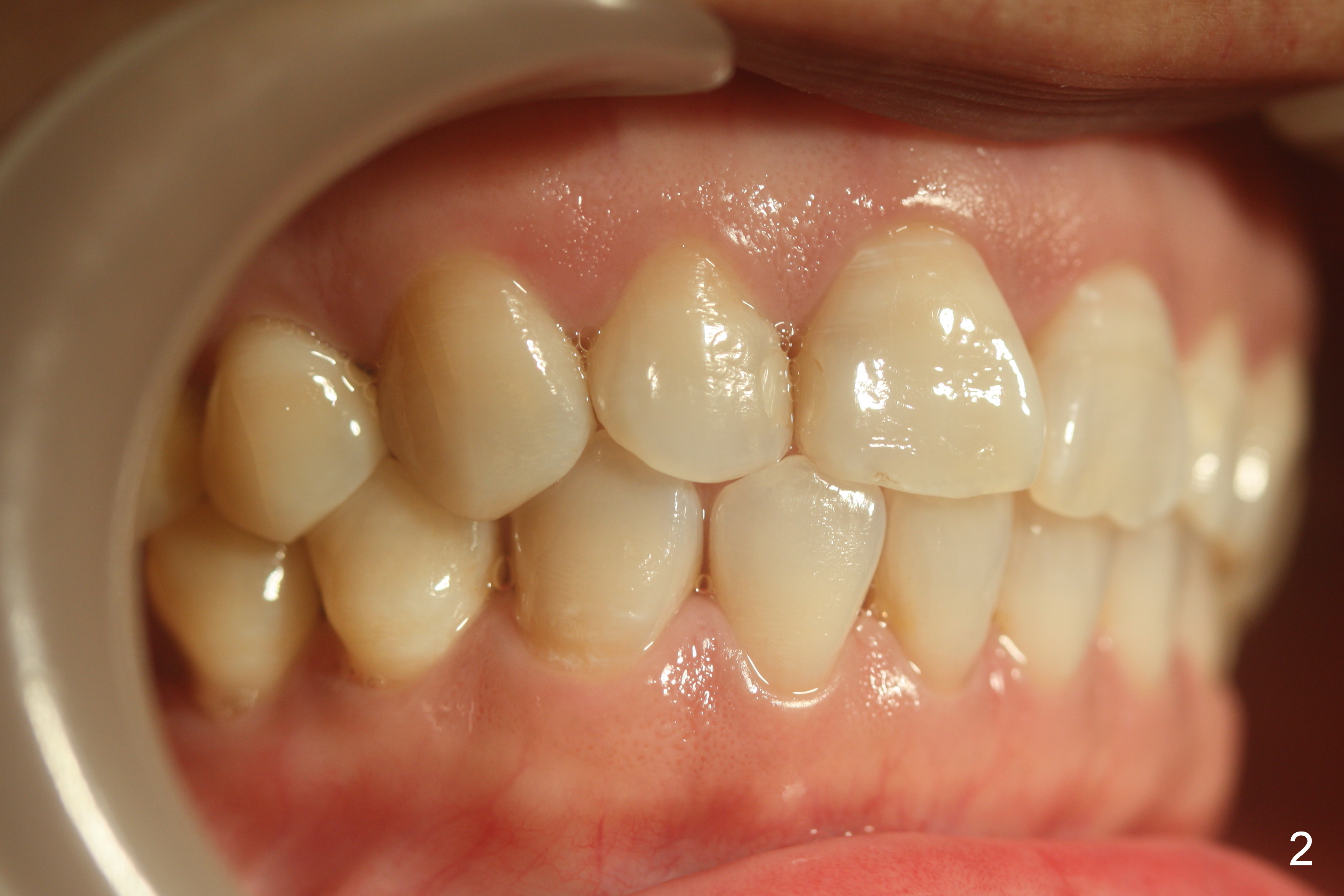
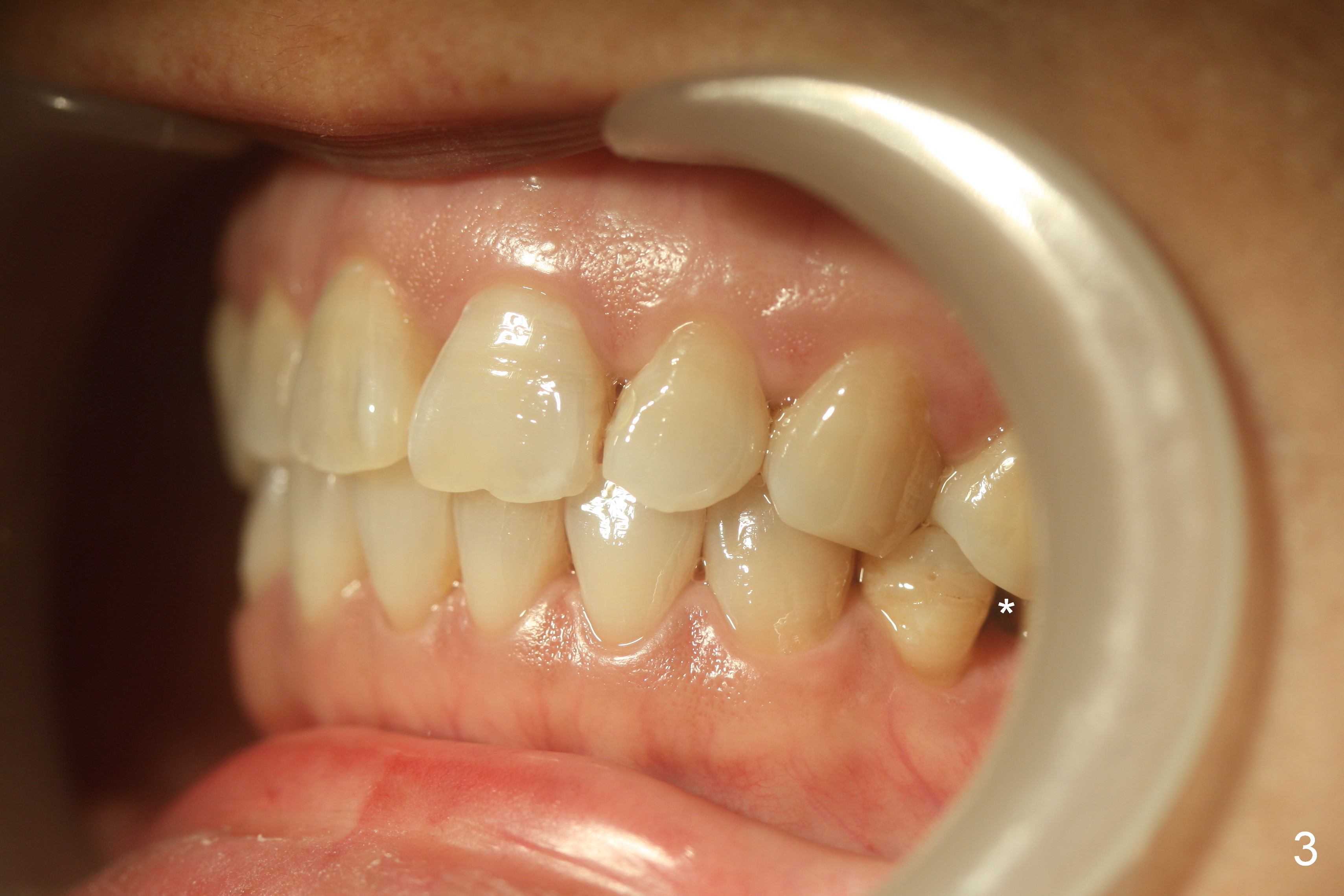
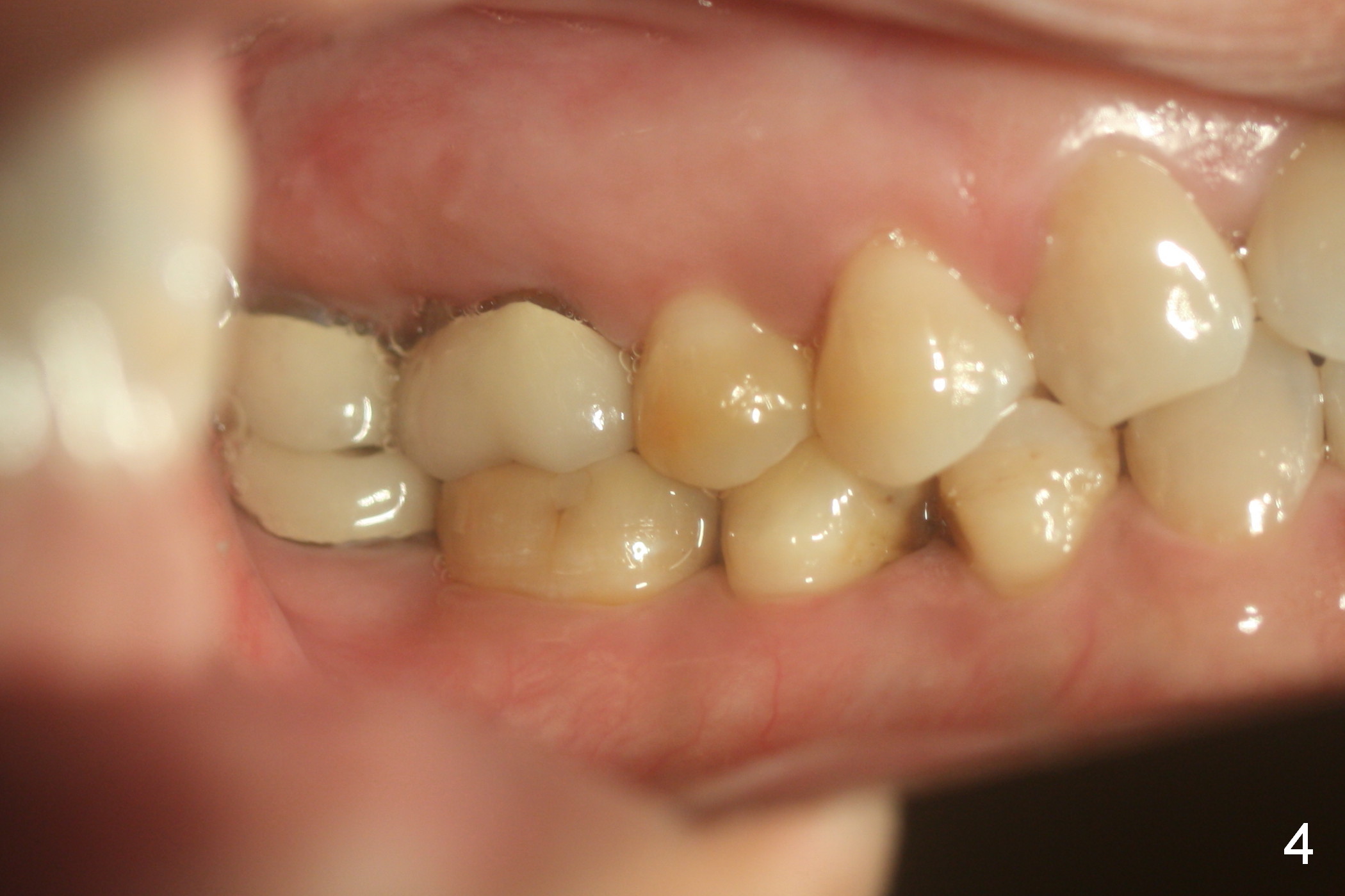
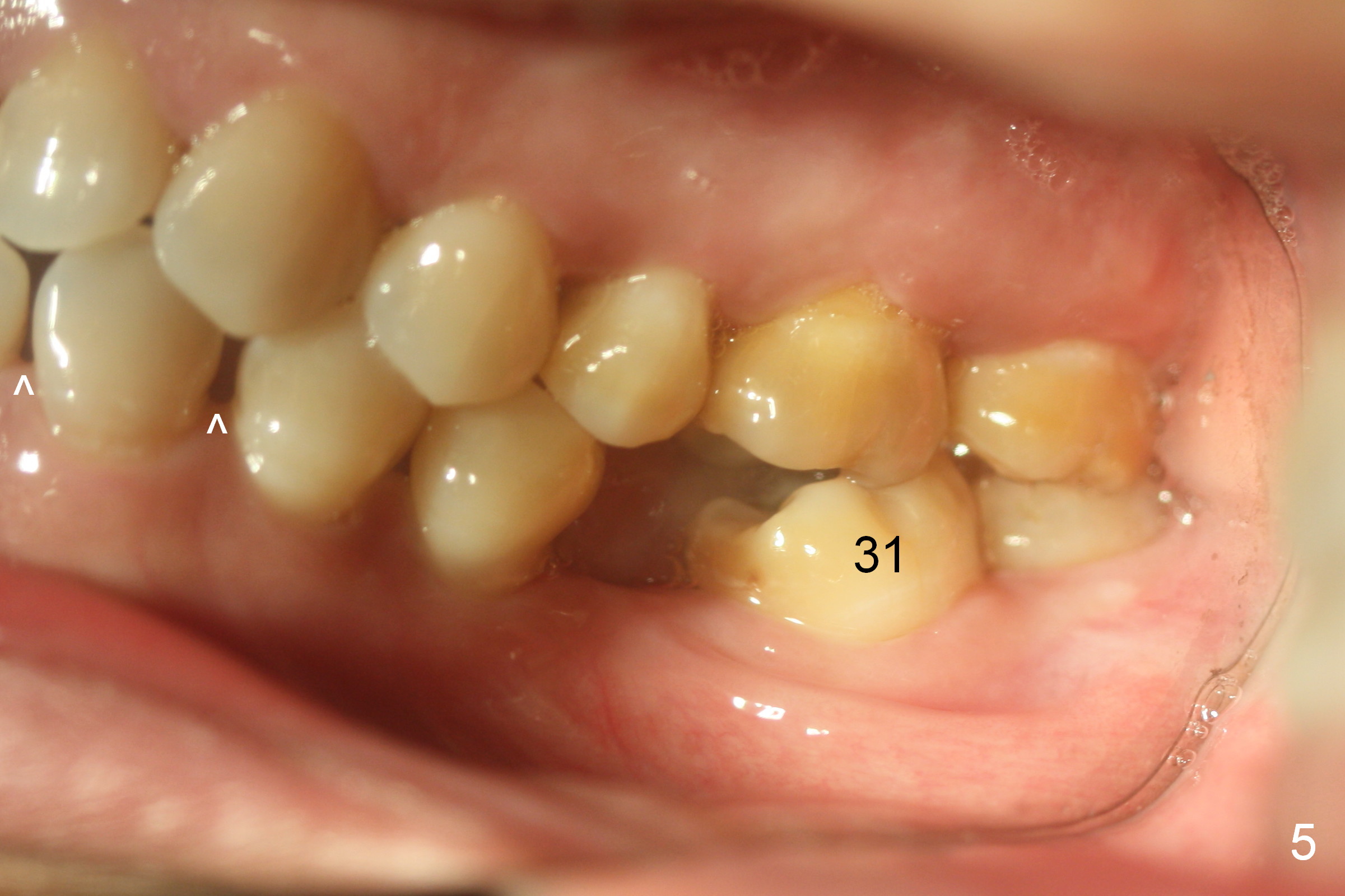
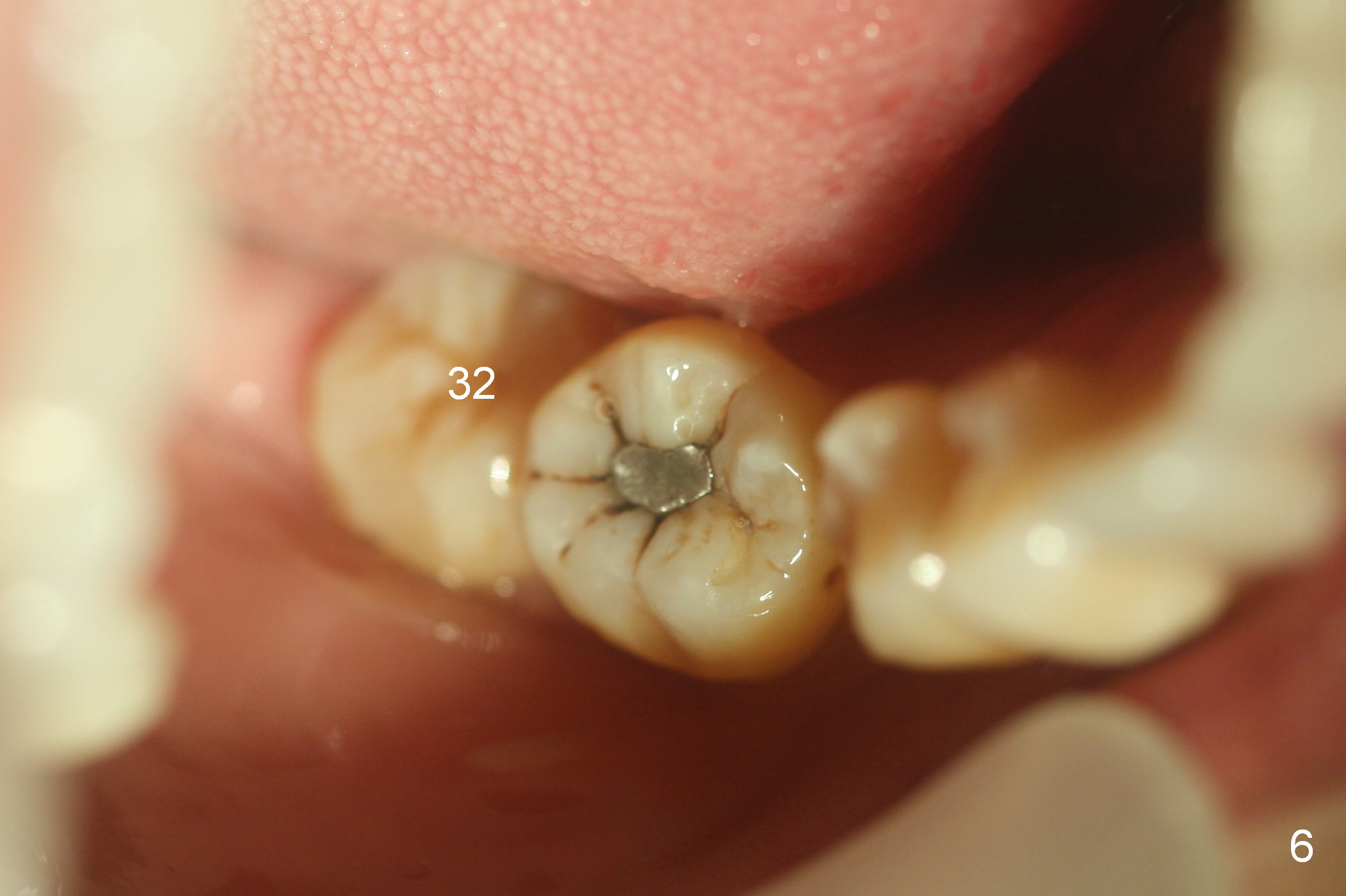
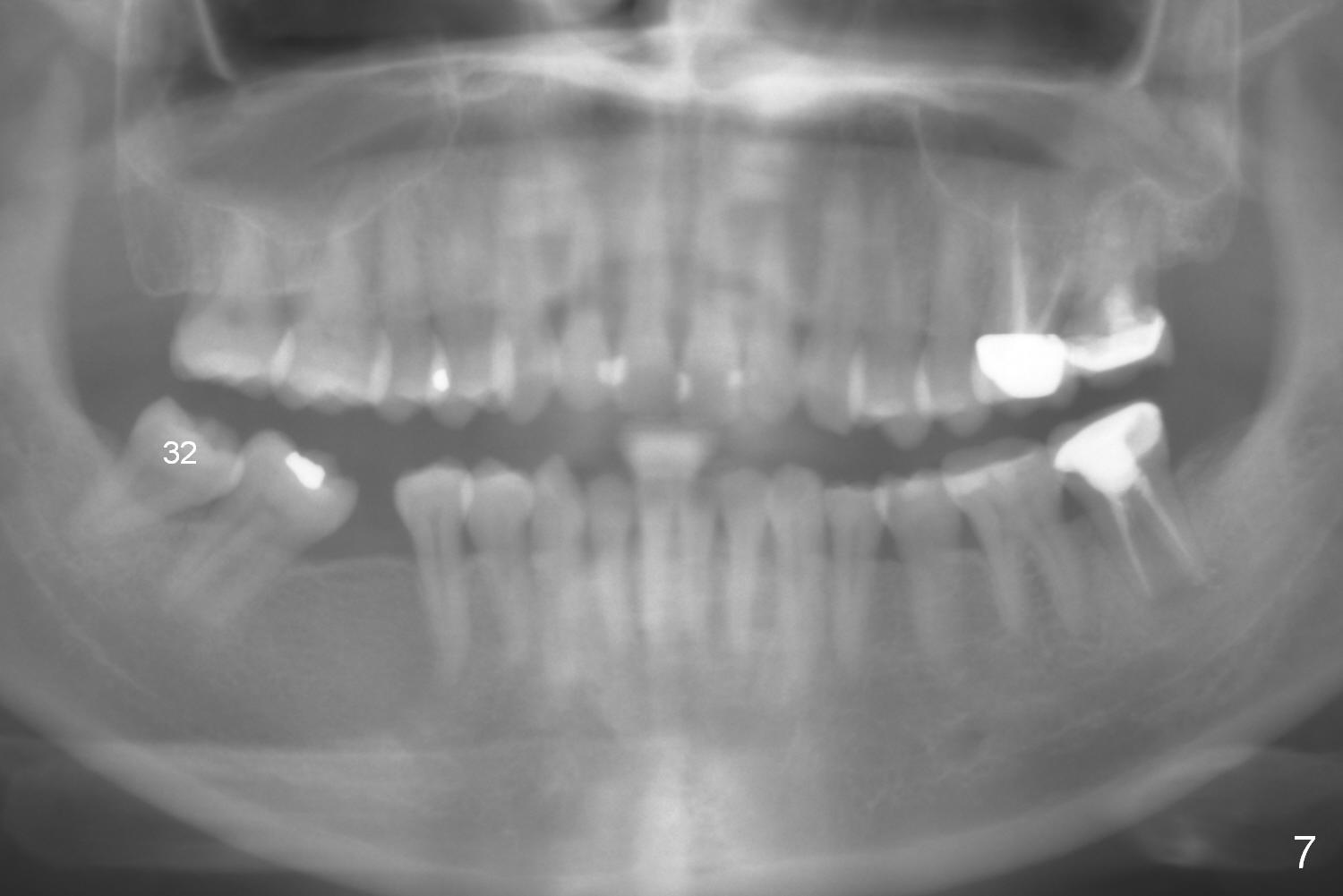
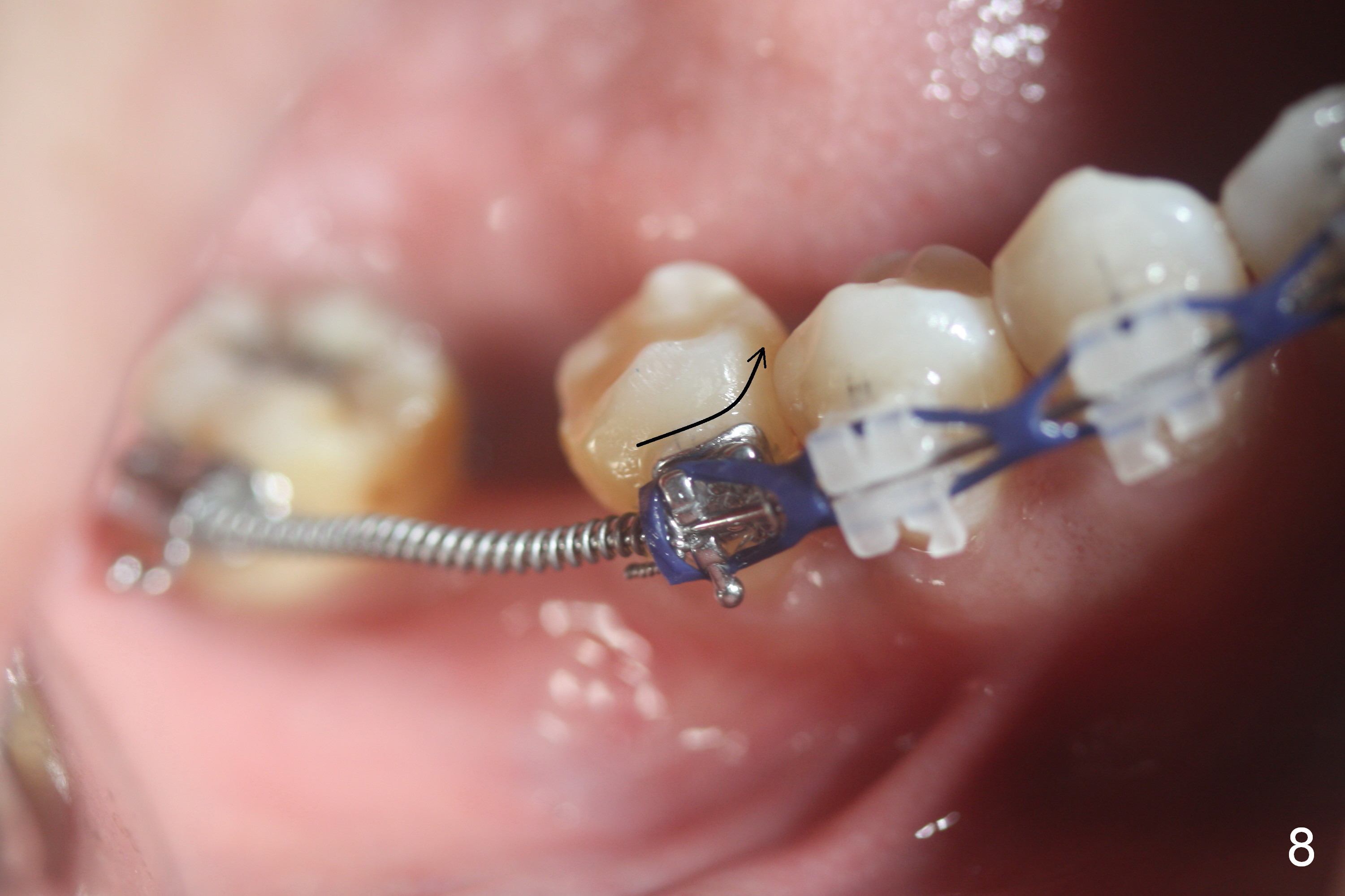
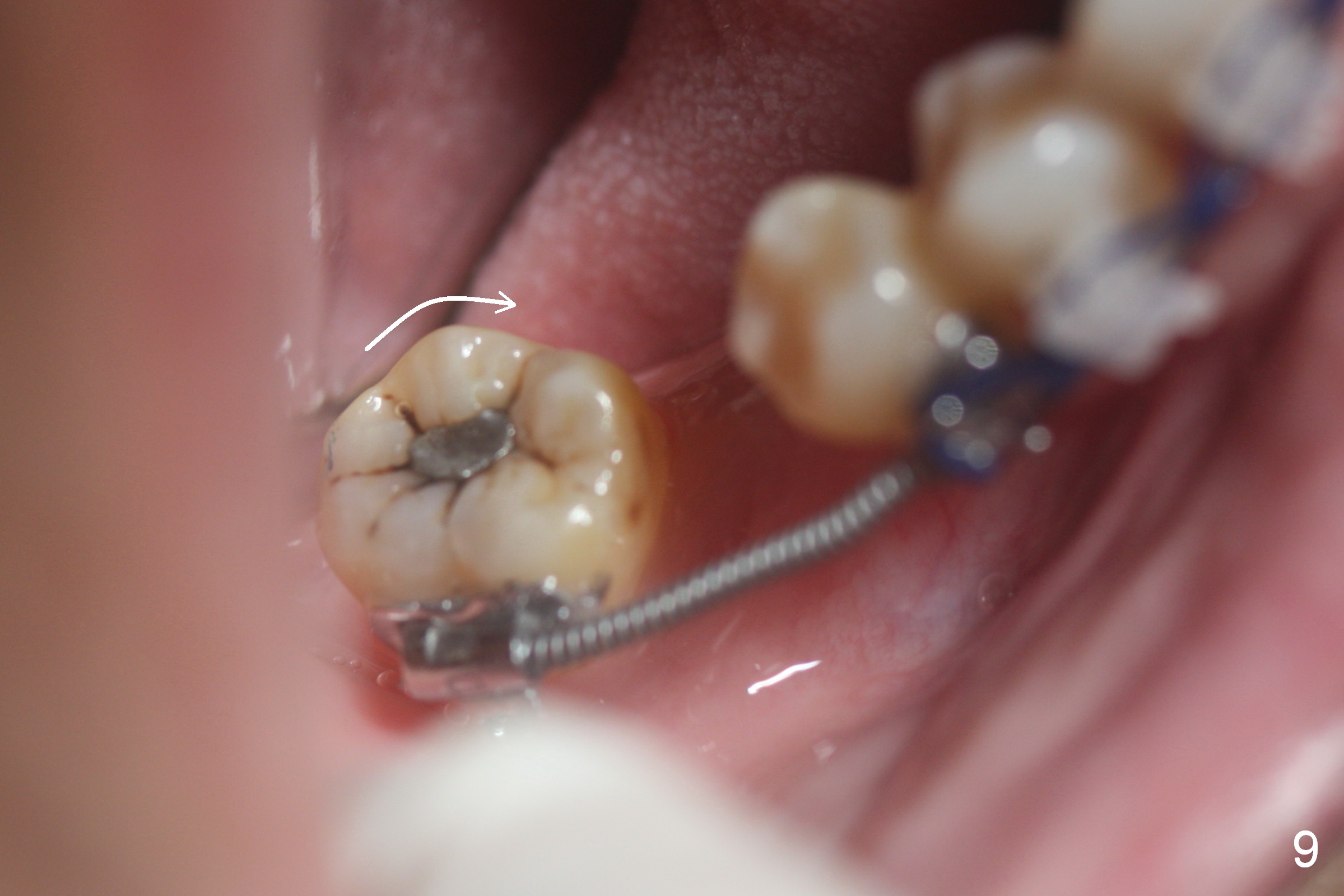
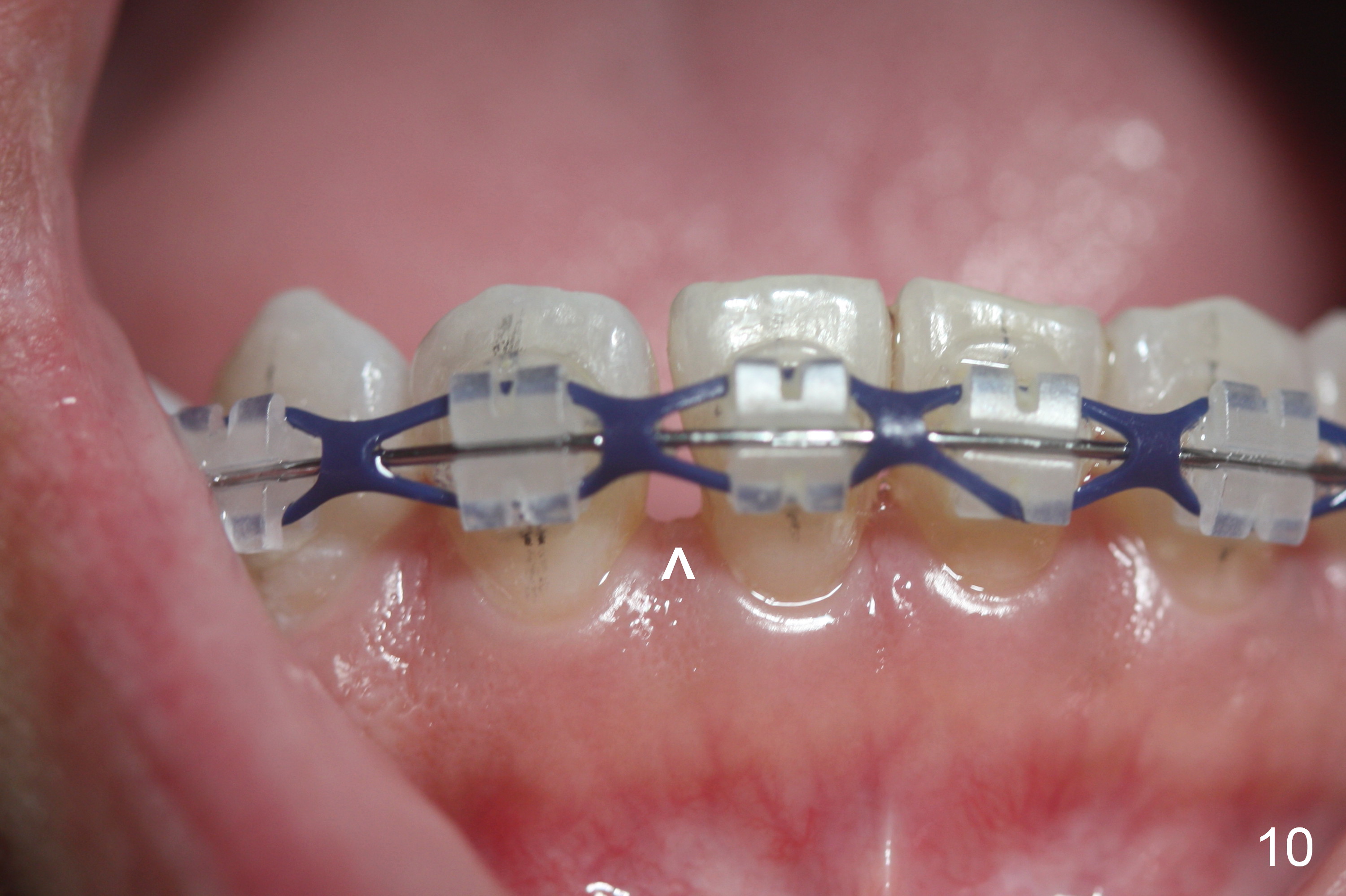
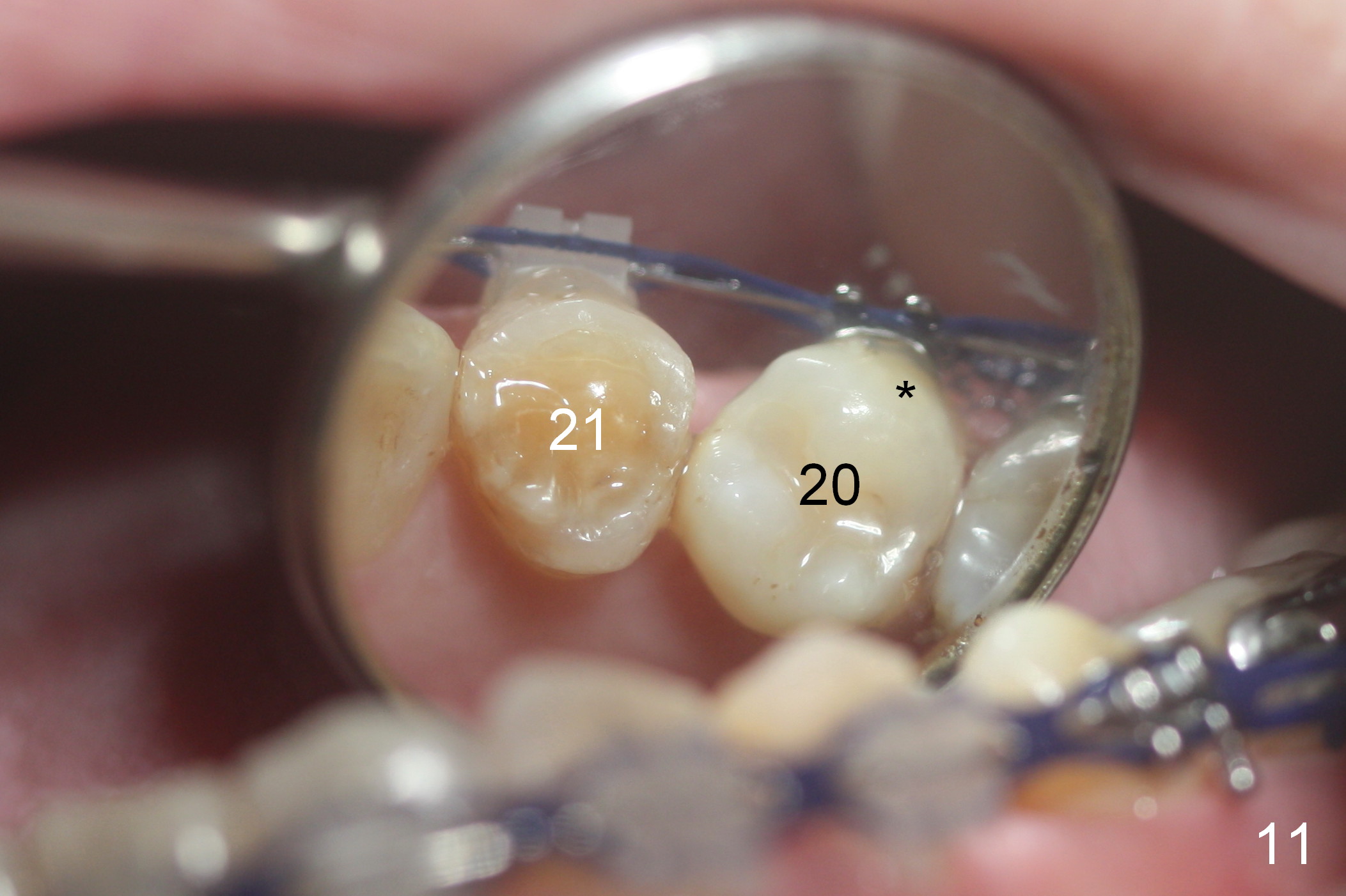
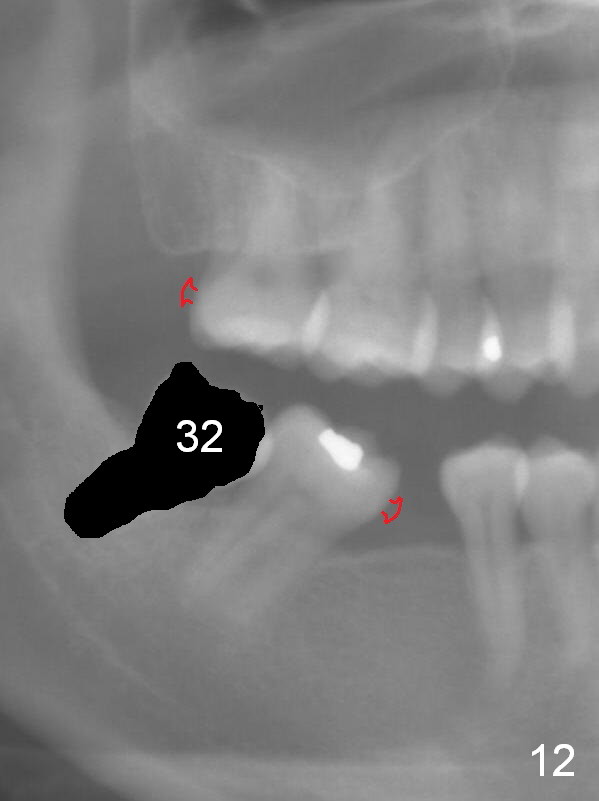
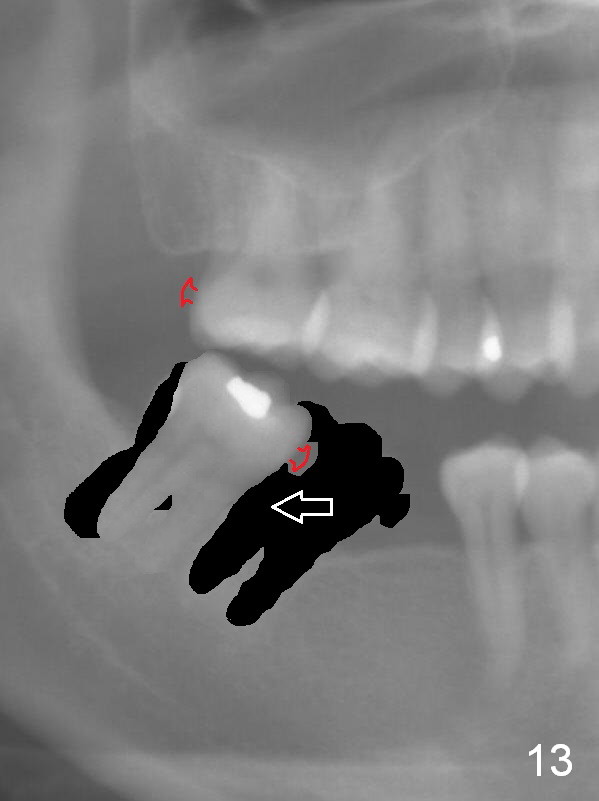
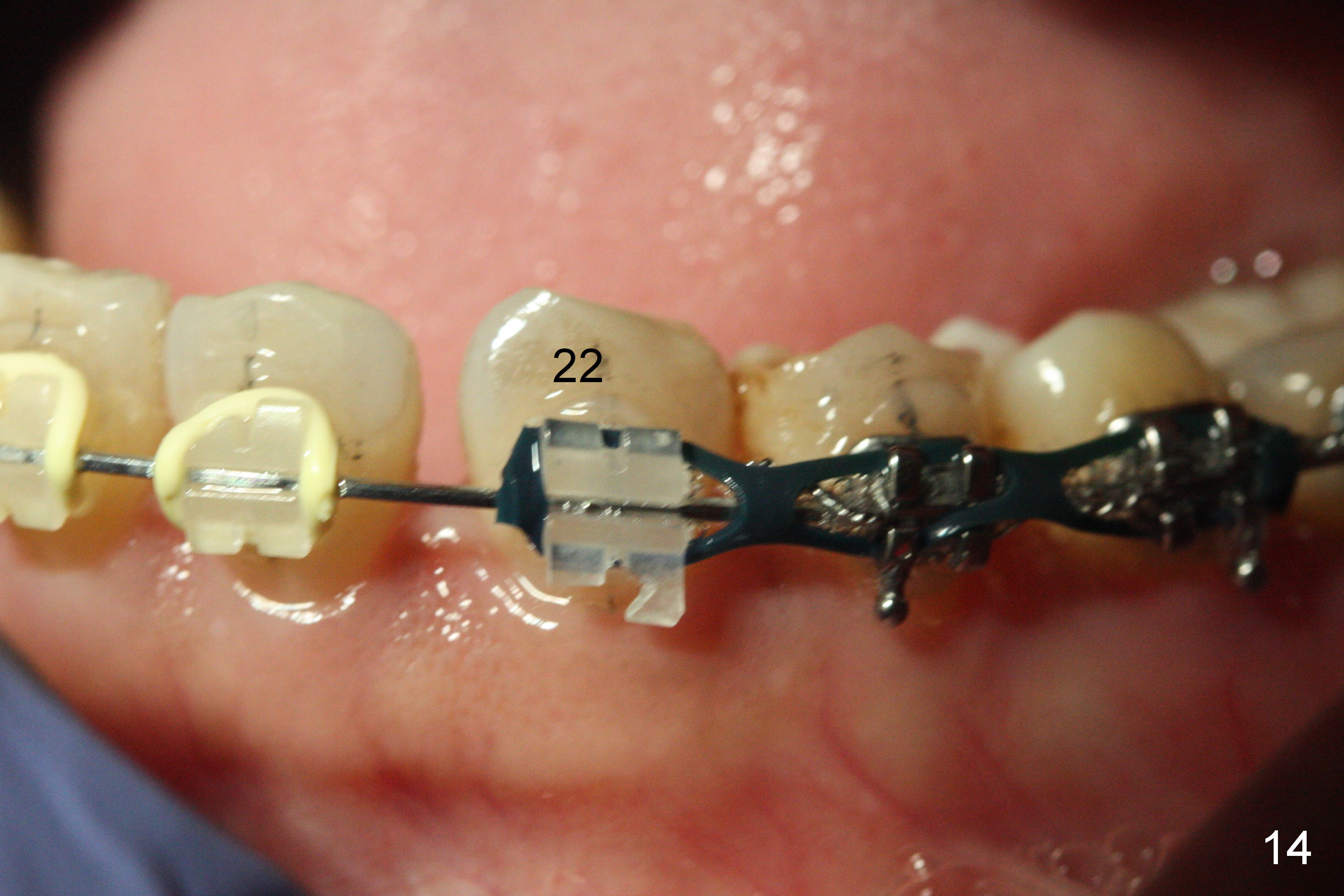
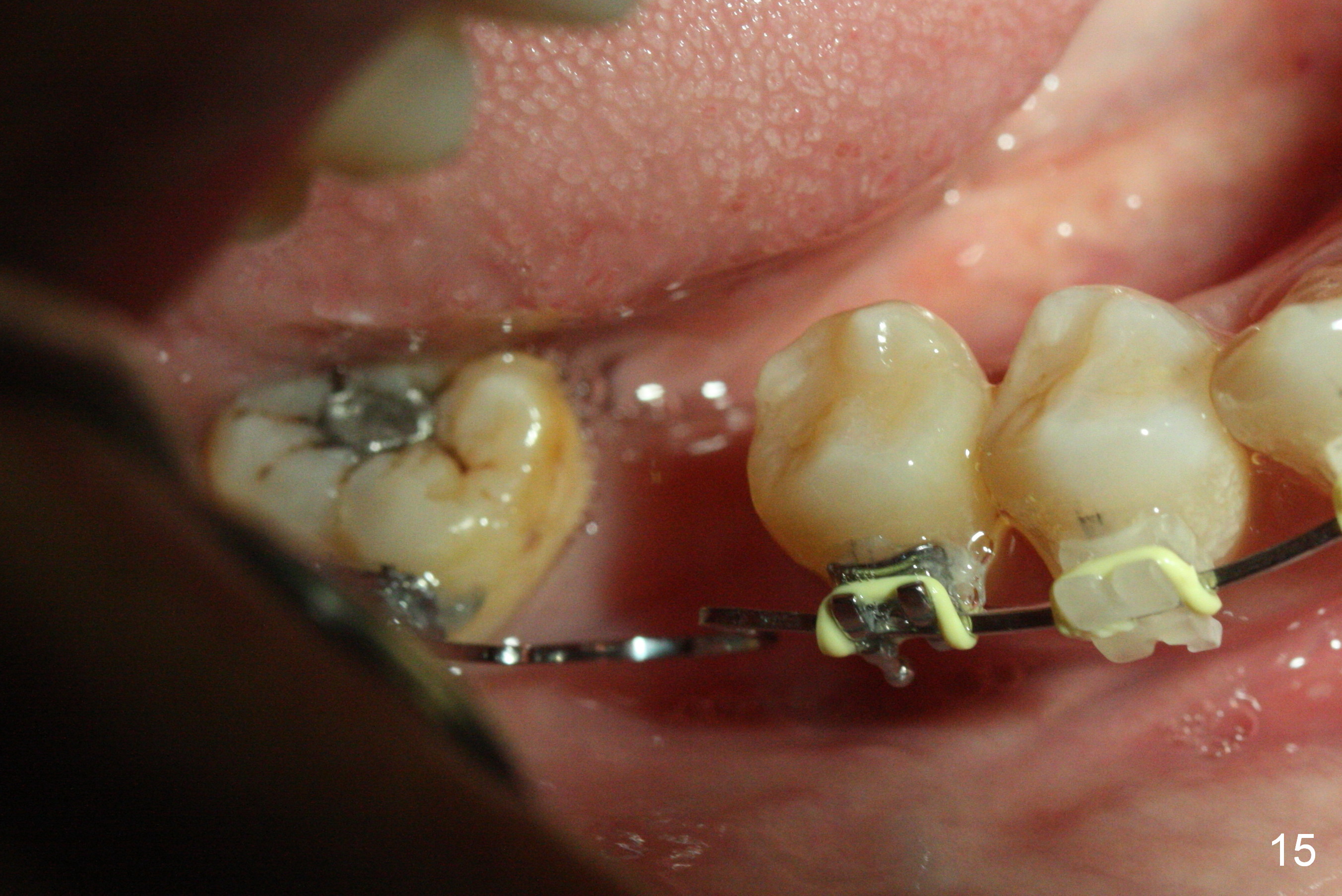
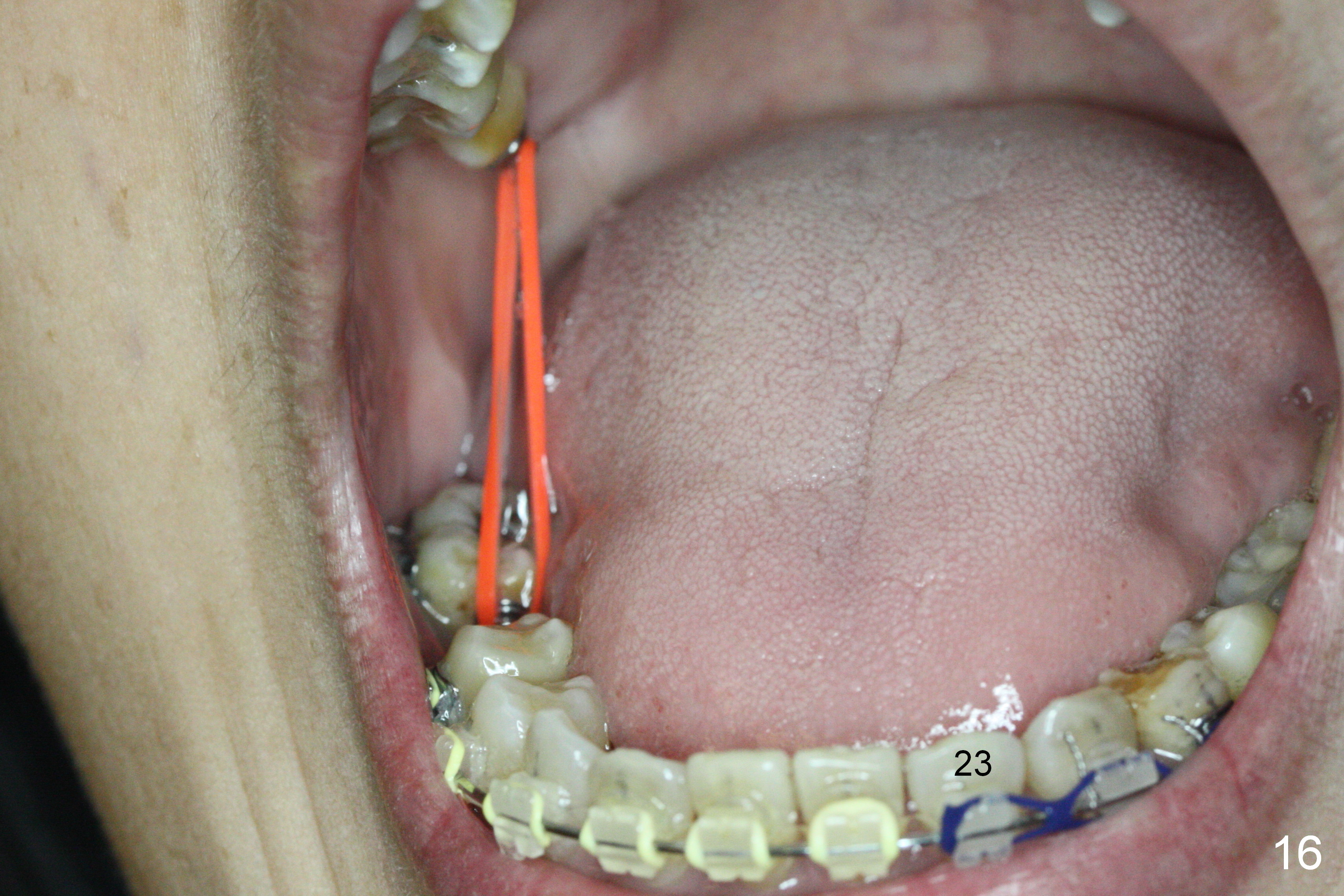
 |
 |
 |
|
 |
 |
 |
|
 |
 |
 |
|
 |
 |
 |
 |
 |
 |
 |
|
Improve Implant Site
A 38-year-old woman agrees with implant placement at #30 and orthodontic preparation, but she does not like to have the tooth #32 extracted (Fig.7).
Show the patient that the tooth #31 is severely mesially tilted with reduction in the mesiodistal width for implant placement (Fig.5,7). The tooth #32 is severely malpositioned (linguoversion, Fig.6). It is extremely difficult to gain space for the implant without #32 extraction.
Brackets will be either from #19 or #22 to #31.
Four weeks of using open coil spring between #29 and 31, these teeth seem to have rotated (Fig.8,9 curved arrows). After placing a longer spring and the same arch wire, power chains are installed to close the anterior diastema (Fig.10 ^). The patient notes the divergence between #20 and 21 (Fig.11). To correct the latter, either place #20 bracket more distal (Fig.11 *) or place power chains between these teeth only. To facilitate #31 distalization (Fig.13), place lingual buttons (Fig.12 red) in the mesial surface of #31 and the distal of #2 with an elastic between the buttons.
Nearly 6 months post banding, the teeth #20-22 have been distalized (Fig.14). An omega loop has been introduced between #29 and 31 for a month. When the loop is activated, there is pressure upon the tooth #29. It appears that interarch retraction between #2 DL and #31 ML is the most effective (Fig.16).
When the patient returns, measure the mesiodistal width of the edentulous area. If it is more than 6 mm, schedule appointment for implant placement. Also take PA.
Return to
Implant & Ortho,
Lower Molar Immediate Implant
Xin Wei, DDS, PhD, MS 1st edition 05/07/2016, last revision 08/13/2018